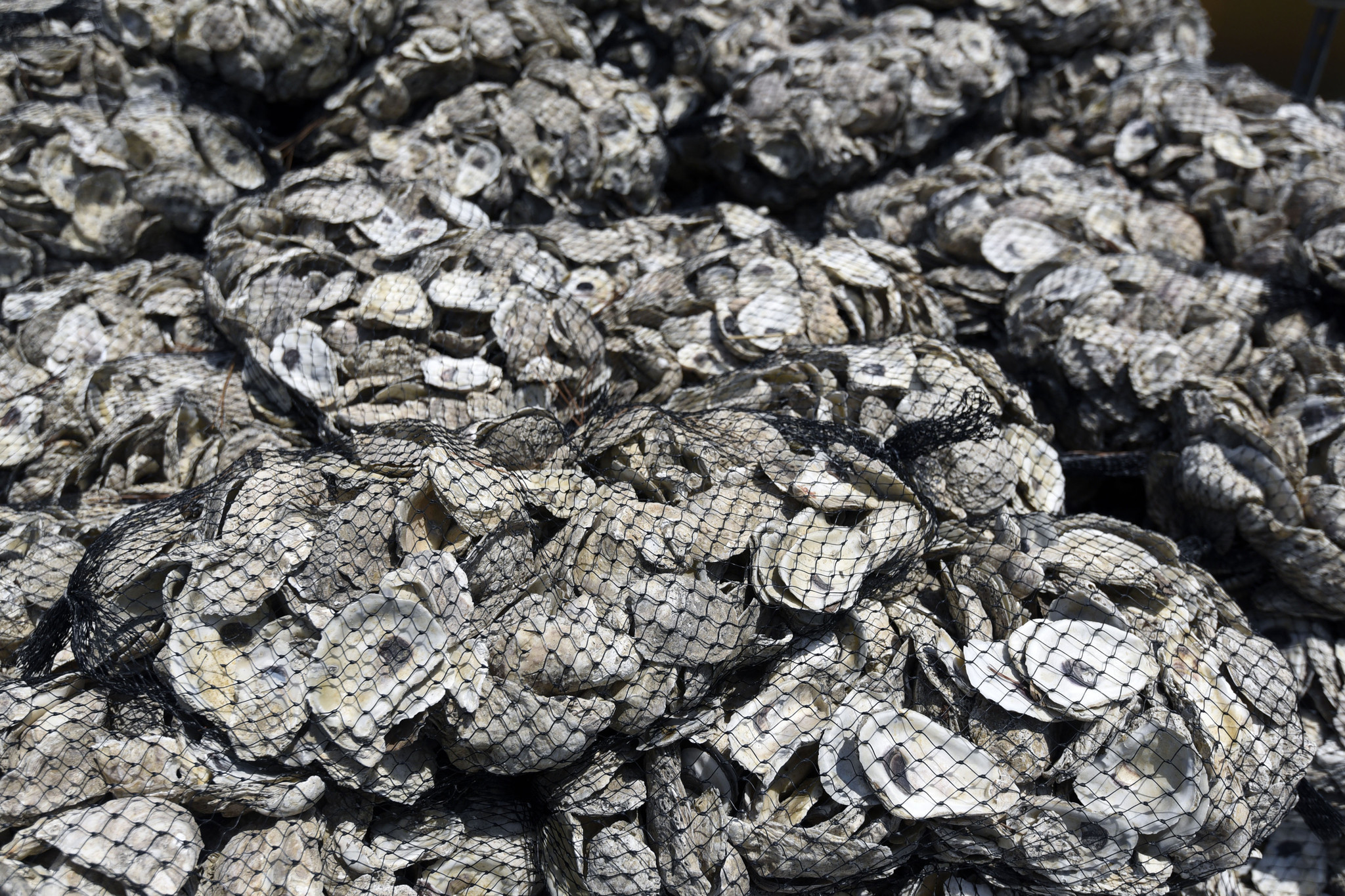The Importance of Oyster Restoration

Oysters are a bivalve species, which feed mainly on phytoplankton, algae, and other small particles within the ocean. They feed by pumping large amounts of water into their bodies. The water is then pumped over their gills, where it is then, trapped by the mucus in their gills, and then the food particles are transported to the oyster’s esophagus and stomach (Bay backpack). When oysters feed, they filter large amounts of water, which helps in removing pollutants, algae, and other small particles out of the water, and thus helping with the water quality in their habitat. In fact, an adult oyster can filter about 25 to 50 gallons of water a day (Robertson 2015)!
Not only are oysters great for filtering water, but they are also an important habitat for different kinds of fish, crabs, invertebrates, and sea grass! And, as many people know, are commonly harvested for food.

mage of aged, bagged oyster shell that is ready to be used as the hard substrate that the juvenile oysters will attach to during the process of oyster restoration.
Unfortunately in recent years oysters have not been doing as well as they once have. This is mainly because of over harvesting, disease, ocean acidification, and other changes in water quality. Along the east coast of the United States the main threat to the oysters tends to be water quality, and over harvesting. Oysters have been harvested for over 300 years in certain areas, and we are now beginning to notice the decline in oysters in these regions, as well as the deterioration in water quality (Oysters).
With the declining populations of these bivalves, oyster restoration is more important than ever. Oyster restoration is the process of rebuilding or restoring oyster reefs. This process involves taking clean oyster shell and juvenile oysters, typically raised in hatcheries, and trying to grow them onto the shell, so that it will have the hard substrate it needs to survive and grow larger (Technical Aspects of Oyster Restoration). Due to the over harvesting of oysters, it has become difficult for oysters to reproduce because many of the larger oysters that are harvested are the older individuals, which are usually the females (Oysters). This causes there to be less eggs for the oyster’s sperm to fertilize, thus creating less new oysters to colonize the reef.
Over harvesting, habitat destruction, turbulence, and water quality has also made it difficult for juvenile oysters to find another oyster shell, or another hard substrate to attach to, because of the lack of shells that are suitable for them to attach to. Many times after oysters are harvested and eaten, very little of the shells ever go back into the ocean. Many are simply thrown out in the garbage after being consumed. Oyster restoration helps with this problem by recycling used shell, and supplying clean and aged oyster shell, or sometimes other types of shell like whelk shell. Many times the shells come from seafood restaurants, volunteers in the community that collect the shell, or they are bought from fishermen.
The way many oyster restoration projects grow the oysters is by first setting the shell in a tank, and then releasing the juveniles that are just about old enough to attach to a shell. After a few days they will begin to settle and after a few weeks they grow larger and you are able to count how many oysters settled on the shells. Once the oysters are a little larger they are then released in what will hopefully become a healthy reef. Even after the oysters are released the reefs are regularly monitored to see how they are growing, and people are not allowed to harvest them in these areas, which helps with the declining populations as well.

Image of juvenile oysters under a light microscope, taken by Alex Blanchet with Stockton University
With the help of locals in our communities, scientists, and others who are eager to learn, help, and protect our marine ecosystems, oyster restoration can become a huge success. Helping with these projects improves water quality in the area, increase the population of oysters in the area, as well as eventually creating more biodiversity within the area due to the increased abundance of oysters and the quality of the water.
